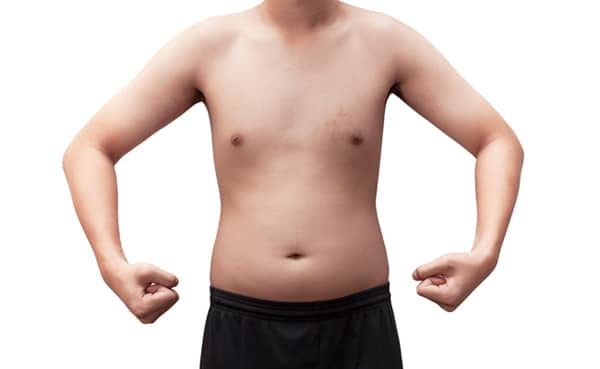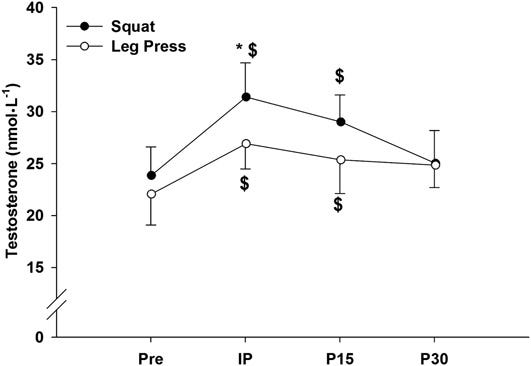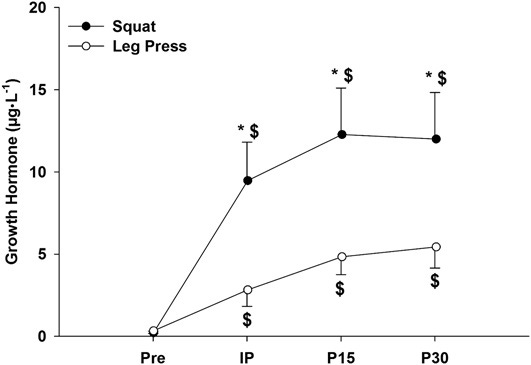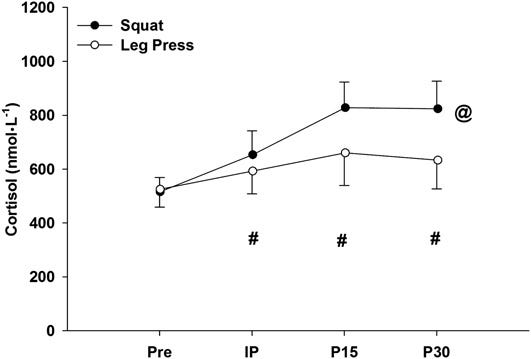When I was fat in middle school I joined the cross country team to shed some pounds. Slowly but surely I started to trim down and eventually looked a lot less fat with a shirt on. However, once I took my shirt off I still had a soft belly, droopy man boobs, and skinny twig arms. Not a good look.
I was also prepubescent so the hormones weren’t raging at the time, but that’s also the point. Without the right hormonal environment, you likely won’t attain the physique you’re striving for. Unless your goal is to look like the Michelin man made from mashed potatoes, then by all means keep jogging and ignore lifting heavy weights.
Many men begin to hit the gym and eat healthier, only to just get skinny fat or hardly change, what’s the deal?
You’re likely not training to optimize your hormones or internal physiology, and instead, are prioritizing burning calories through exercises and reducing calories through eating. But, not everything is about calorie burn. At first glance this is a good strategy, but in reality, you’re likely digging yourself into a hole. You’re also not setting yourself up to be in an anabolic environment, which is NECESSARY for muscle gain.
Do This Instead: 3 Domains
There are 3 domains we need to look at when it comes to optimizing your hormones so you can look good and feel even better. In this article we’ll go over some very basic tips you’re likely slacking on. You can immediately implement these strategies to boost your T levels and see better results from your workouts.
Training
Nutrition
Recovery
Training
People sometimes forget physiology is a science and think just doing crunches and jogging is going to get them a six pack. Unless you’re skinny and already have one, it probably won’t. Also, abs on a skinny guy aren’t impressive anyway. You need to train like a man to look like a man.
Prioritize Compound Lifts
Squats, Lunges/Split Squats, Deadlifts, Bench Press, Overhead Press, Dips, Rows, and Chin/Pullups should make up the majority of your training program. Stop filling your training with fluff work like high rep bicep curls and cable flyes. Heavy compound movements should make up the bulk of your training, you can finish off your sessions with fluff work if you want.
Compound movements will put a greater demand on your entire body and will result in a greater stress response compared to isolation movements. Shaner et Al. 2014 studied the difference between performing 6 sets of 10 squats and 6 sets of 10 leg press and found significantly different responses in cortisol, testosterone, and growth hormone.
“Isn’t cortisol bad?” If it’s elevated chronically yes. However, if your workouts don’t initiate a cortisol response, then the session wasn’t stressful enough to initiate an immune response. Meaning, your body has no reason to gain muscle or get stronger because it wasn’t challenged. These responses occur because compound movements load more muscles, joints, and demand more from the nervous system.
Greater systemic stress from lifting heavy compound movements leads to an anabolic response that promotes muscle growth.
Train Heavy & Focus on Strength
All the nerds online want to make posts about how training with lighter loads can lead to muscle gain similarly to lifting heavy. While I don’t necessarily disagree, lifting heavier will provide better results long term. There’s a reason big guys are usually pretty strong. Before anabolic steroids became widely available, old school bodybuilders and strength enthusiasts preached about the benefits of training heavy. Because it works, and most importantly, works for natural trainees.
Only until recently did lifting heavier fall out of favor by social media “experts”. If you’re natural and want to optimize your internal physiology to put on size, you should push your strength.
Video below of Tom Platz to inspire you to lift more like a man.
Greater cross sectional area will allow you to get stronger,
Becoming stronger will allow you to hit the same/more weight for more volume,
Hitting the same weight, or more, for more volume will allow you to build more cross sectional area.
Rinse and Repeat.
This is why it’s best to rotate between phases of high volume (accumulation) with phases of high intensity (intensification) so one phase can feed the next. Light pump workouts may feel good but they shouldn’t be the primary focus of your session. You can finish workouts with higher reps (12+ reps) but most of your session should emphasize heavy compound lifts.
Train Hard
This should go without saying, but it needs to be said. A lot of people I see in the gym just don’t work hard. You need to be pushing heavy weights and going near failure (ideally 0 to 2 reps in reserve with good form). You can make up for less effort with more volume to some extent, but training each muscle group intensely twice a week tends to yield the best results for most people.
Don’t know what hard training looks like? Watch literally any Milko Tokola video and your test levels will also increases 10% (no need to search pub med for the citation, the voices in my head tell me it’s true).
Recovery
Recovery also includes nutrition but that’ll be covered in the next section. When “recovery” is mentioned nowadays the immediate thought is ice baths, cold plunges, saunas, hot tubs, sun tanning your scrotum, etc. Before you start majoring in the minors, make sure to have your ducks in a row with the principles below.
Daily Sunlight
Get 20-30 min of sunlight in the morning and in the afternoon before dark. This Will entrain your circadian rhythm to help you sleep better in addition to giving you the vitamin D you’re prone to be deficient in.
Sleep Hygeine
Couple of rules for sleep. It’s difficult to limit screen time but it would be great to cut out blue light or screens a couple hours before bed. If you’re unable to, or refuse to do so, i’d recommend still picking a regular sleep and waking time.
Sleep duration is important, however, sleeping 8 hours from 2 am to 10 am isn’t going to be as restful as sleeping 8 hours from 9 pm to 5 am. Desyncing your circadian rhythmn can cause spikes in cortisol and inhibit deep sleep. You also will get less REM sleep the later you go to bed. A late bed time also decreases growth hormone release and negatively impacts insulin sensitivity.
Stress
Stress is a silent killer. Stress can elevate cortisol, disrupt the HPA axis, and lower luteinizing hormone. Stress activates the sympathetic nervous system, resulting in synthesizing cortisol. Cortisol production takes resources from creating other hormones like testosterone. Stress also increases aromatization which can convert testosterone to estrogen and decrease free testosterone.
Last but not least, chronic stress also increases oxidative stress which damages your vascular system and reduces testosterone even further.
It’s a BIG deal.
“Studies show that men under chronic stress can experience a 20-40% drop in testosterone levels.”
Nutrition
There are a lot of factors in this section but we’ll go into a couple pertinent ones. Environmental pollutants or certain chemicals in our food supply can also be disrupting our endocrine system. Although those things are concerning, you can’t entirely eliminate them unless you’re homesteading, growing your own food, and making your own products. The best way to stay as healthy as possible is to eat a diet comprising of whole and minimally processed foods.
Looking for a comprehensive nutrition plan that includes supplements, meal templates, a recipe manual, and a long term strategy to maximize your body composition?
Sign up for a nutrition assessment above before the prices increase soon.
Micronutrients
Influencers want to complicate nutrition but it really isn’t super complicated to solve a vast majority of your problems. The standard American diet is energy rich and micronutrient poor. Highly processed foods are stripped of most of their micronutrient content (vitamins and minerals). The best way to ensure your endocrine system is running like a fine tuned machine is to eat a variety of fruit, vegetables, eggs, and meat. This will provide the chemical catalysts necessary for keeping your physiology running smoothly.
Basic Supplements to consider for optimization: Magnesium, Zinc, Vitamin D
Note: These are just foundational supplements to consider and not an exhaustive list. I have more I’d recommend if you’re serious. That’s something we can discuss if you DM me more about your situation.
Stimulants
Excessive stimulant intakes can disrupt the HPA axis, decrease sleep quality, and increase cortisol, all of which will negatively impact your hormones. Minimize caffeine and other stimulants. I’d recommend less than a couple cups of coffee daily (at most) and keeping the caffeine intake to only before noon.
Calorie Intake
One of the biggest mistakes I still consistently see when it comes to body recomp is once people start adopting a healthier diet they take their calories too low. Aim for 25 to 30 calories per kilogram of body weight as a starting point. You want to find caloric maintenance before putting yourself in a caloric deficit for fat loss. Keeping calories low for too long can cause decreases in testosterone but also impair your recovery and blunt muscle growth.
If you want better body composition, you need to be as anabolic as possible and that means eating enough to fuel your training and recover from it. Lately fasting has become trendy, and as a tool for weight loss it’s a simple constraint for people to follow to piut themselves in a caloric deficit. However, starving yourself for half a day is NOT optimal for muscle growth. If your goal is to gain size and look “toned”, then fasting often wouldn’t be my recommendation.
Fiber & Gut Health
Believe it or not, your gut health will also impact your hormones. It’s not just about what you eat, but what you eat and absorb. Recent research has recently been examining the link between your gut health and hormones like testosterone.
Firmicutes phylum bacteria is associated with greater testosterone levels in older males (Matsushita et Al. 2022).
Poor gut health can cause inflammation in the gut lining which could lead to reduced testosterone levels.
Certain bacteria produce metabolites that could lead to decreased testosterone levels.
Fiber is a key player when it comes to having a healthy gut. Fiber is a major fuel source for your gut microbiome.
Greater fiber intakes increase the diversity of your gut
Slows digestion and allows for better absorption of nutrients
Supports immune function by decreasing production of potentially harmful bacteria.
I asked Anne & Avery to give y’all a comprehensive take on how you can hit your fiber goals, because “eat your fruits and vegetables” is something your mom told you, but you didn’t listen to her so here we are.
Hey Weekly Flex readers! Anne, RD & Avery, CHC from the Noos publication, here! While many people focus on what not to eat, fiber stands out as an essential nutrient we should actively seek to consume more of. Found in plant foods, fiber is a carbohydrate that passes relatively intact through our digestive system. Most people only consume around 15g per day, but the ideal intake should be for women 25-30g/day, and for men 30-38g/day. This important nutrient has been shown through extensive research, including a landmark review of studies involving 135 million participants, to help lower cholesterol, reduce cancer risk, prevent IBD, regulate blood sugar, and control hunger.
So how exactly does fiber work its magic?
Fiber serves multiple roles in the body: some types feed beneficial gut bacteria, helping reduce inflammation and support immune function, while others provide crucial mechanical benefits for digestive health by adding bulk and aiding food passage through the digestive system. Fiber comes in two essential forms - soluble fiber (oats, apples, avocado, to name a few) that dissolves to regulate cholesterol and blood sugar, and insoluble fiber (nuts, whole wheat products, green beans) that aids digestion. Including diverse fiber sources in your diet ensures you get both these crucial benefits.
Fiber is also like nature's appetite control. Since it slows digestion, it takes up space in your stomach, helping maintain steady blood sugar levels and making you feel satisfied longer after eating. To prevent digestive discomfort increase your fiber intake slowly and drink lots of water! From your morning oatmeal to your afternoon apple, getting enough fiber is as simple as adding a few plant-powered foods to your day - small changes that make a big difference for your health. If you’re looking for ideas to help you up your fiber intake, check out our visual below! Thanks for reading along, and if you’re curious to read a deep dive into fiber, check out our Noosletter from November on this important nutrient!
Wrapping it all up
Supplements and TRT are frequently the first things that come to mind when people think about improving their testosterone or hormones. However, what we listed above should be tackled first and could provide a HUGE benefit.
Here’s the Skinny:
Prioritize heavy compound lifts in your training
Focus on Strength
Train Hard
Get Sunlight in the AM and PM (20-30 min each ideally)
Practice good sleep hygeine
Minimize Stress
Maximize your nutrition quality by eating whole, minimally processed, foods
Reduce your stimulant intake
Eat enough calories
Improve your gut health and eat your fiber















Great stuff guys. Comprehensive post with a lot of valuable takeaways
lol